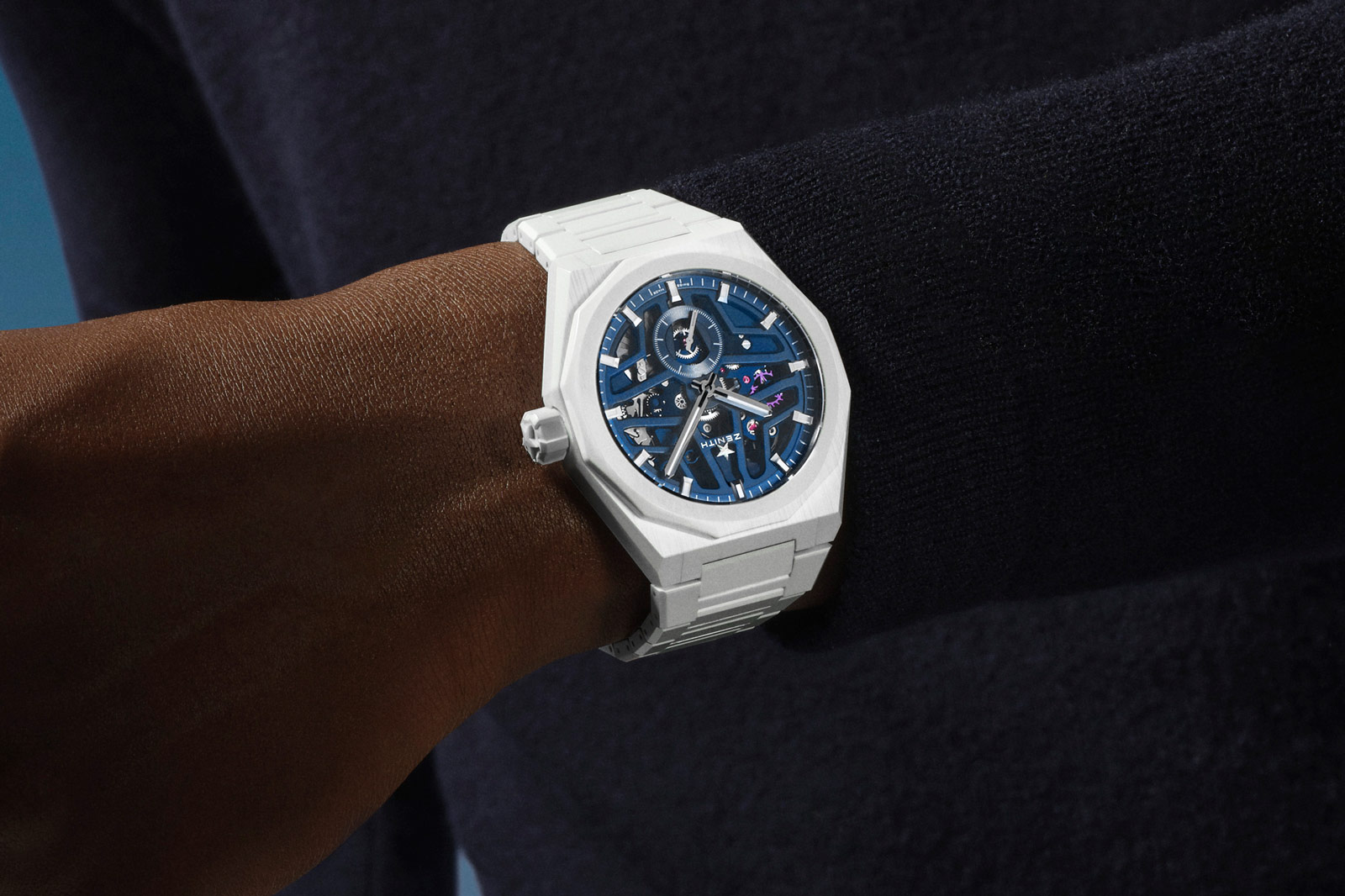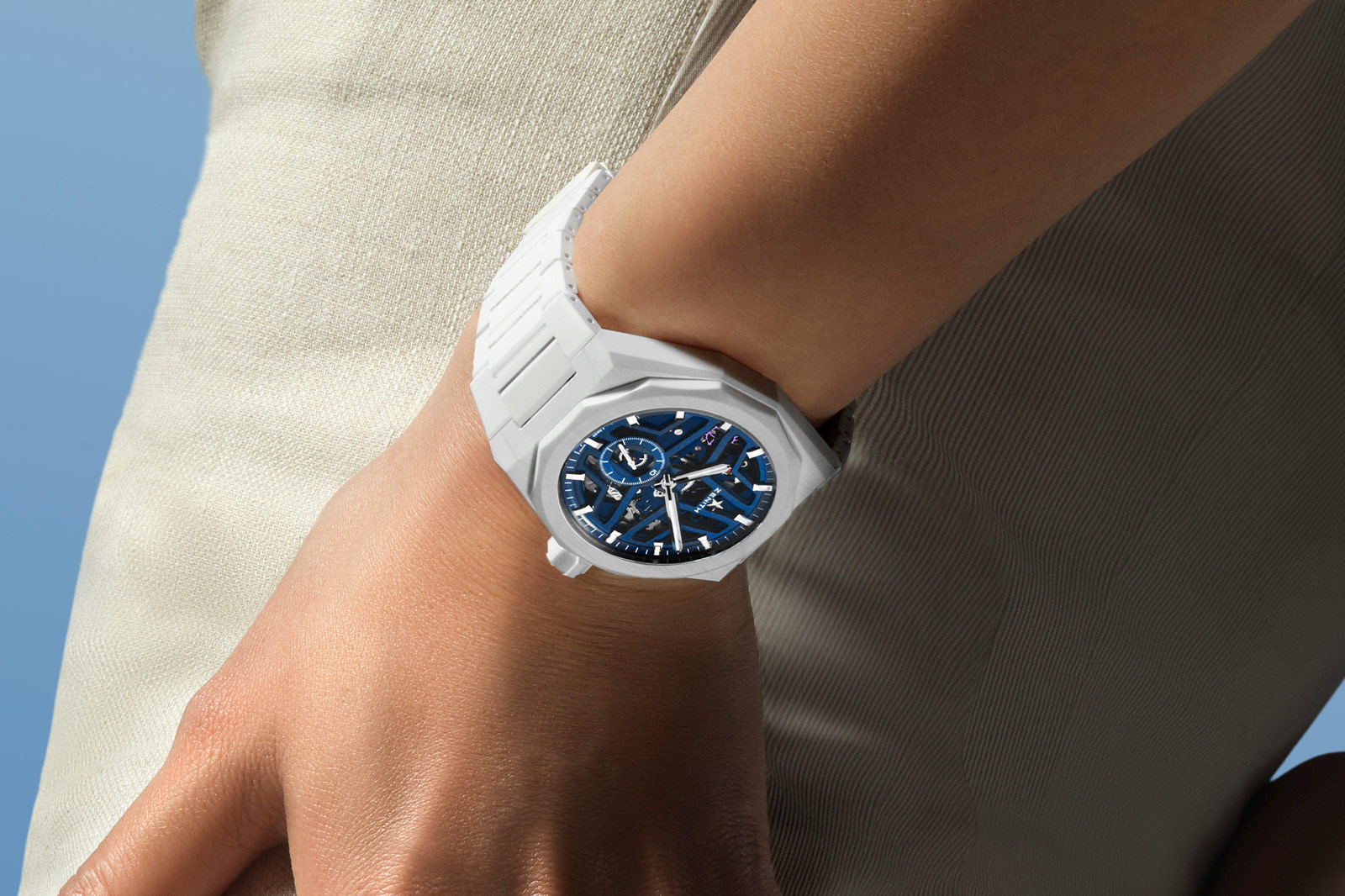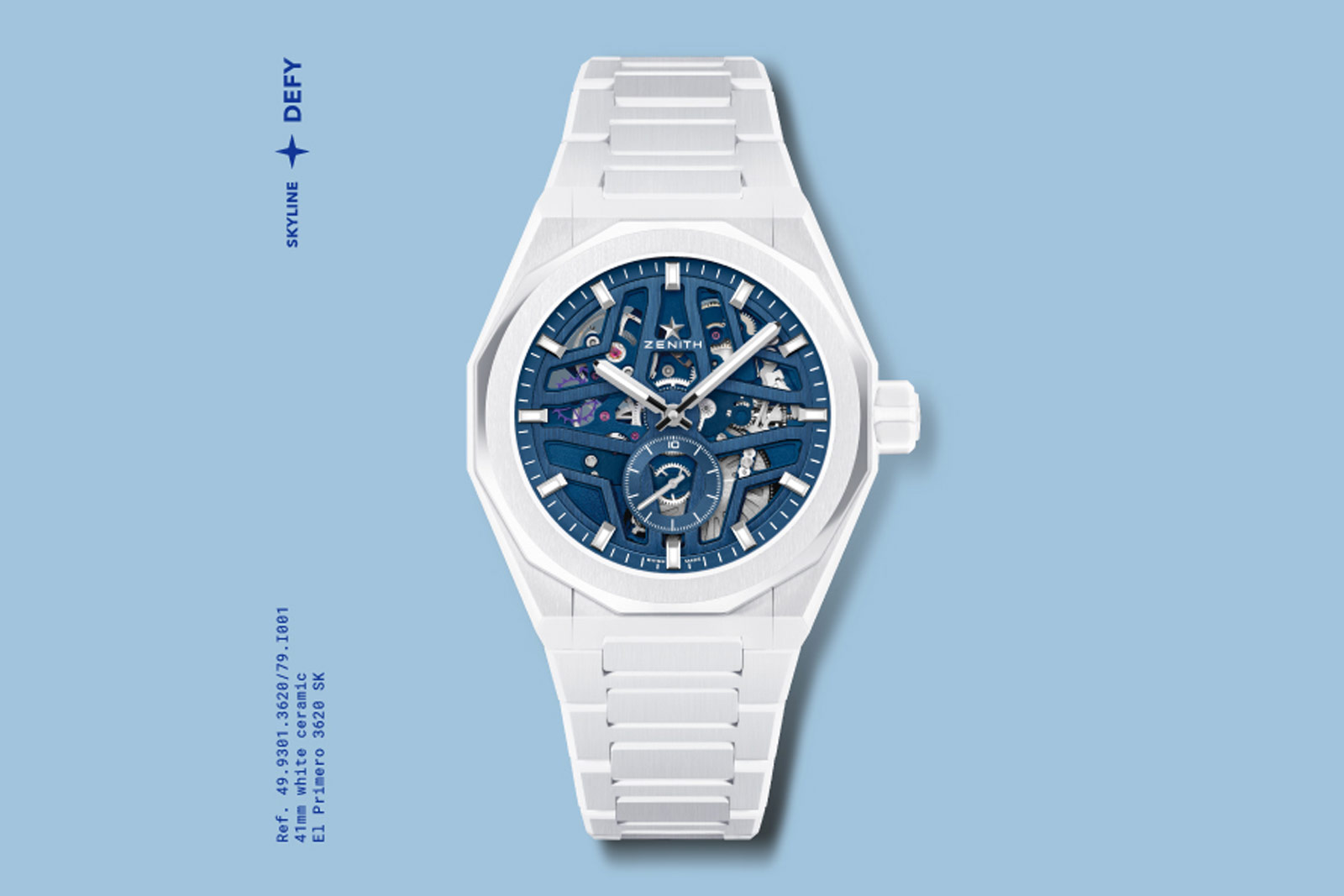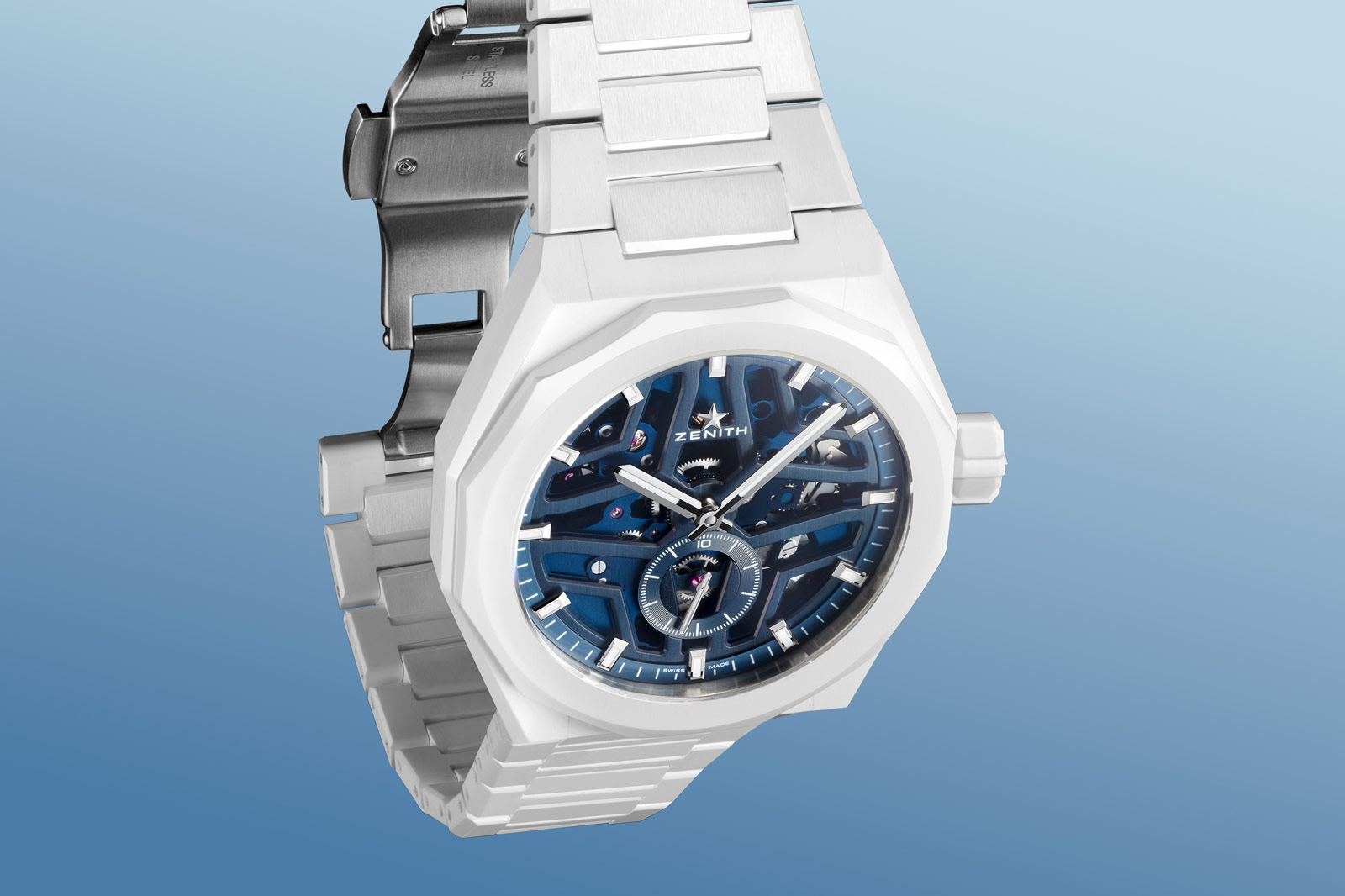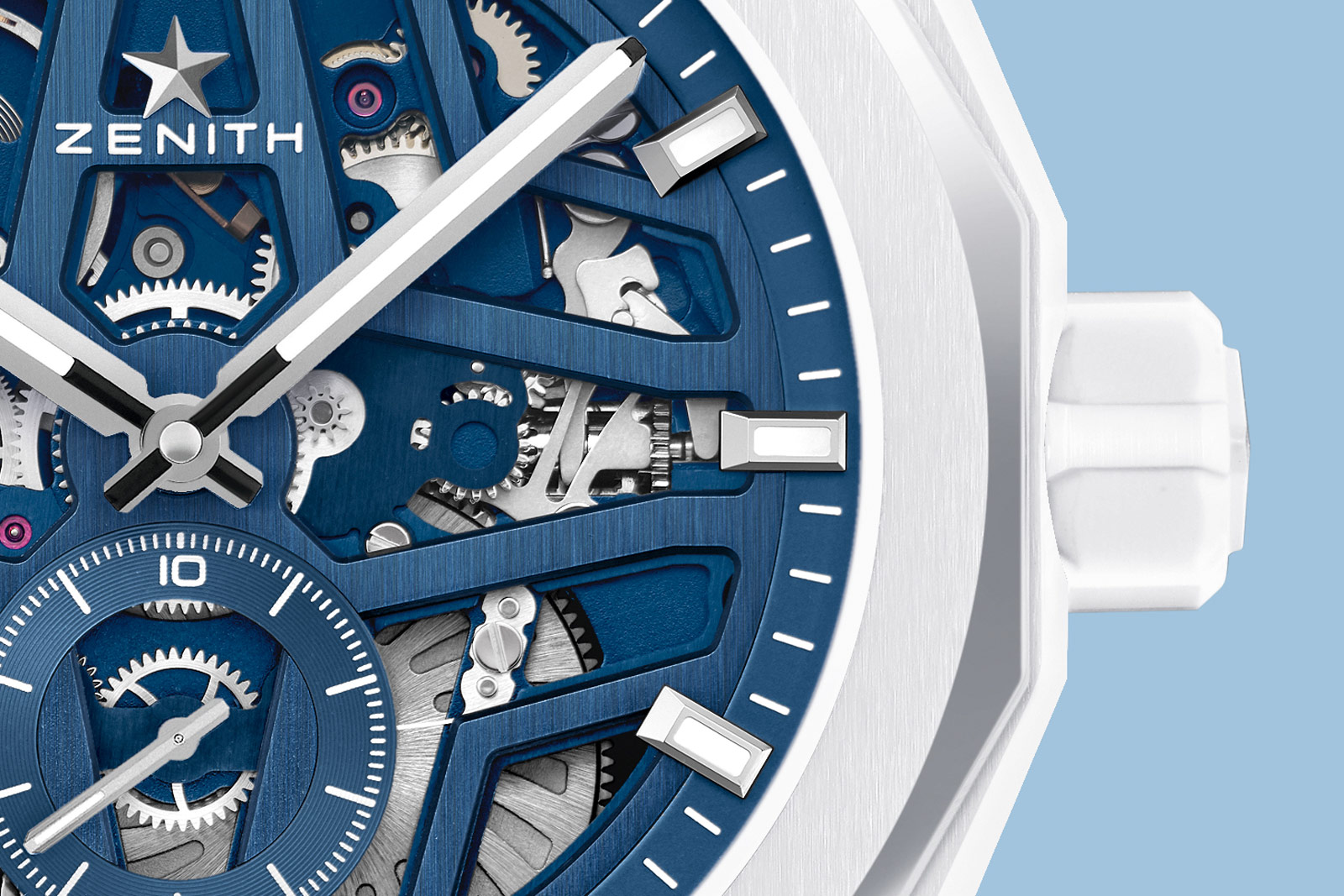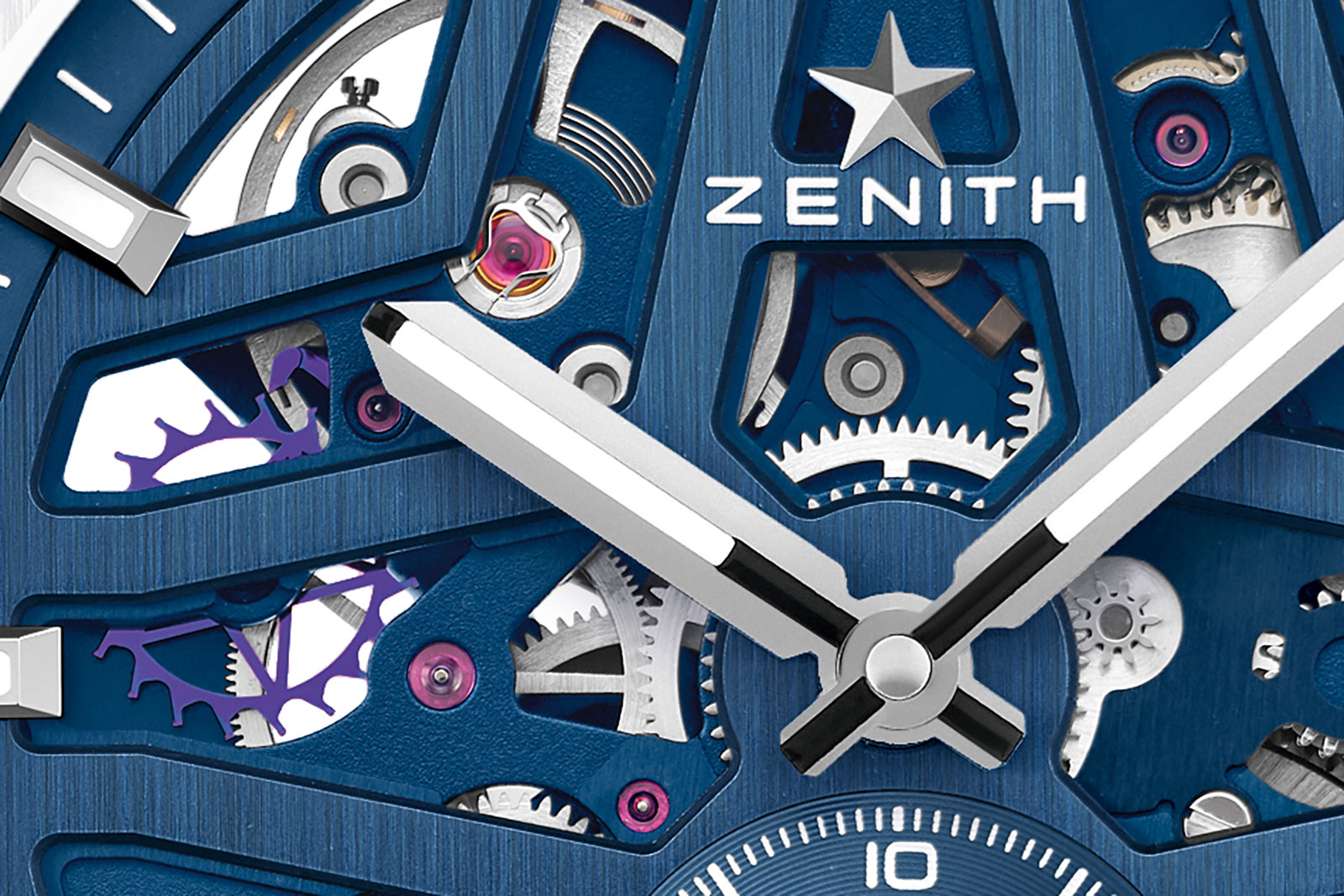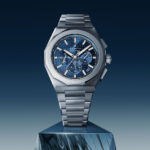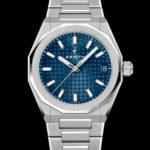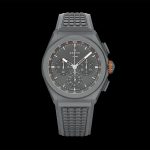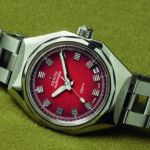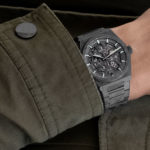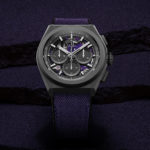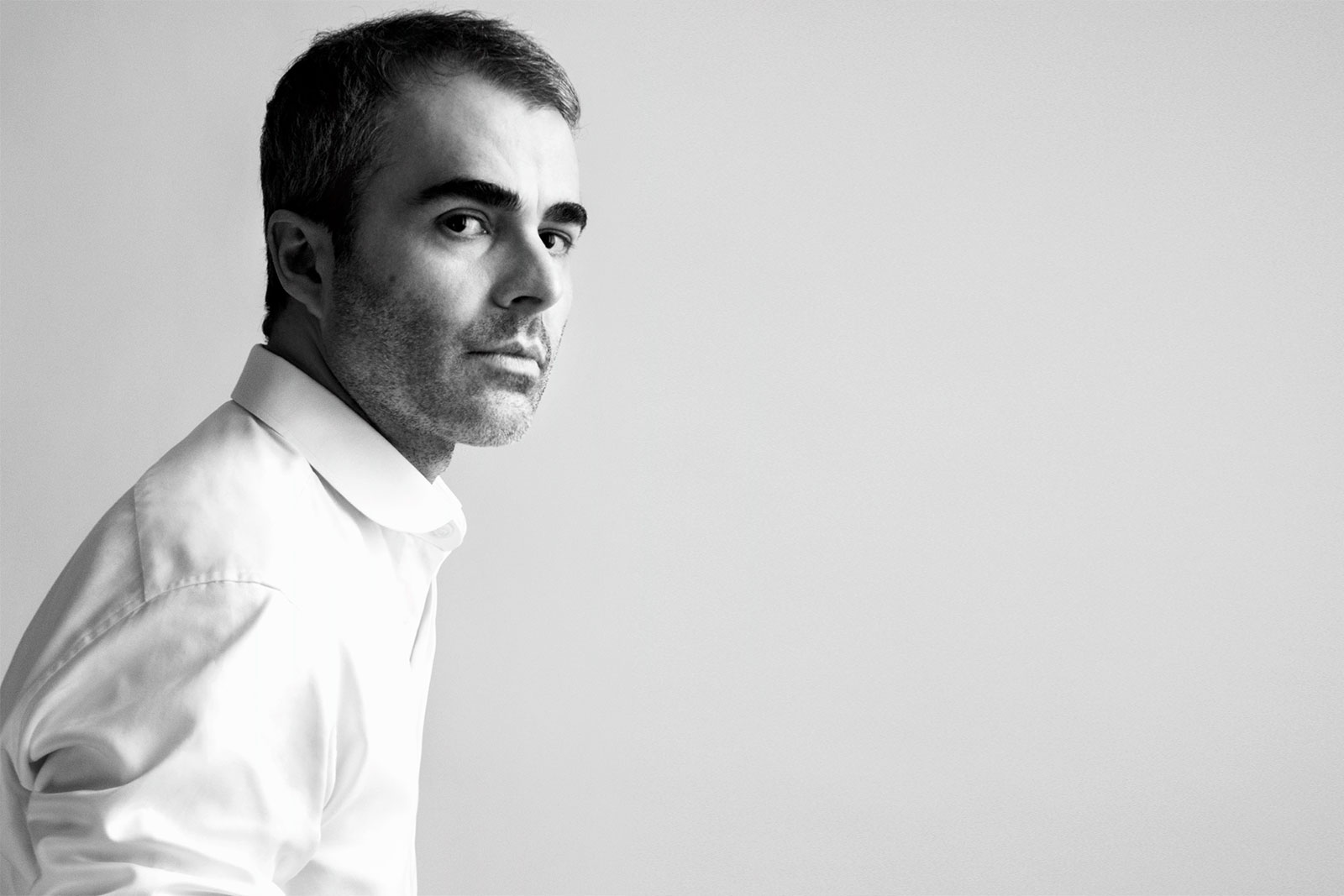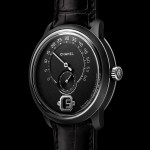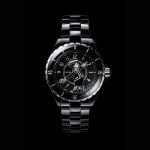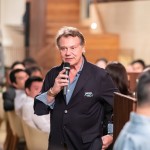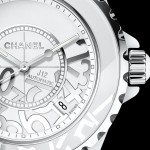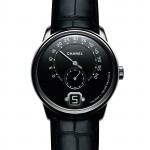Now having been director of Chanel’s watch creation studio for almost a dozen years, Arnaud Chastaingt has shaped the brand’s line-up of timepieces and time-telling objects, imbuing them with a distinctive yet versatile style that is still recognisably Chanel.
After a decade at Cartier, Mr Chastaingt took the helm of the design studio as Chanel was expanding and refining its watch division. Besides the scaling up of its longtime manufacture in La Chaux-de-Fonds, where top-of-the-line movements like Calibre 1 are produced, Chanel also invested in Kenissi, the movement maker majority owned by Tudor.
The brand’s investments in watchmaking have paid off, with its 2024 collection including the J12 Couture Workshop wristwatch powered by the in-house Calibre 6 that incorporates an automaton of Coco Chanel wielding a pair of scissors. While the engineering and mechanics are all located in Switzerland, Mr Chastaingt mandates the aesthetics from the brand’s headquarters in Paris, even designing the bridges of the in-house movements. He spoke to us about design, details, and why a brand like Chanel makes complicated watches for men.
The interview was edited for clarity and length.
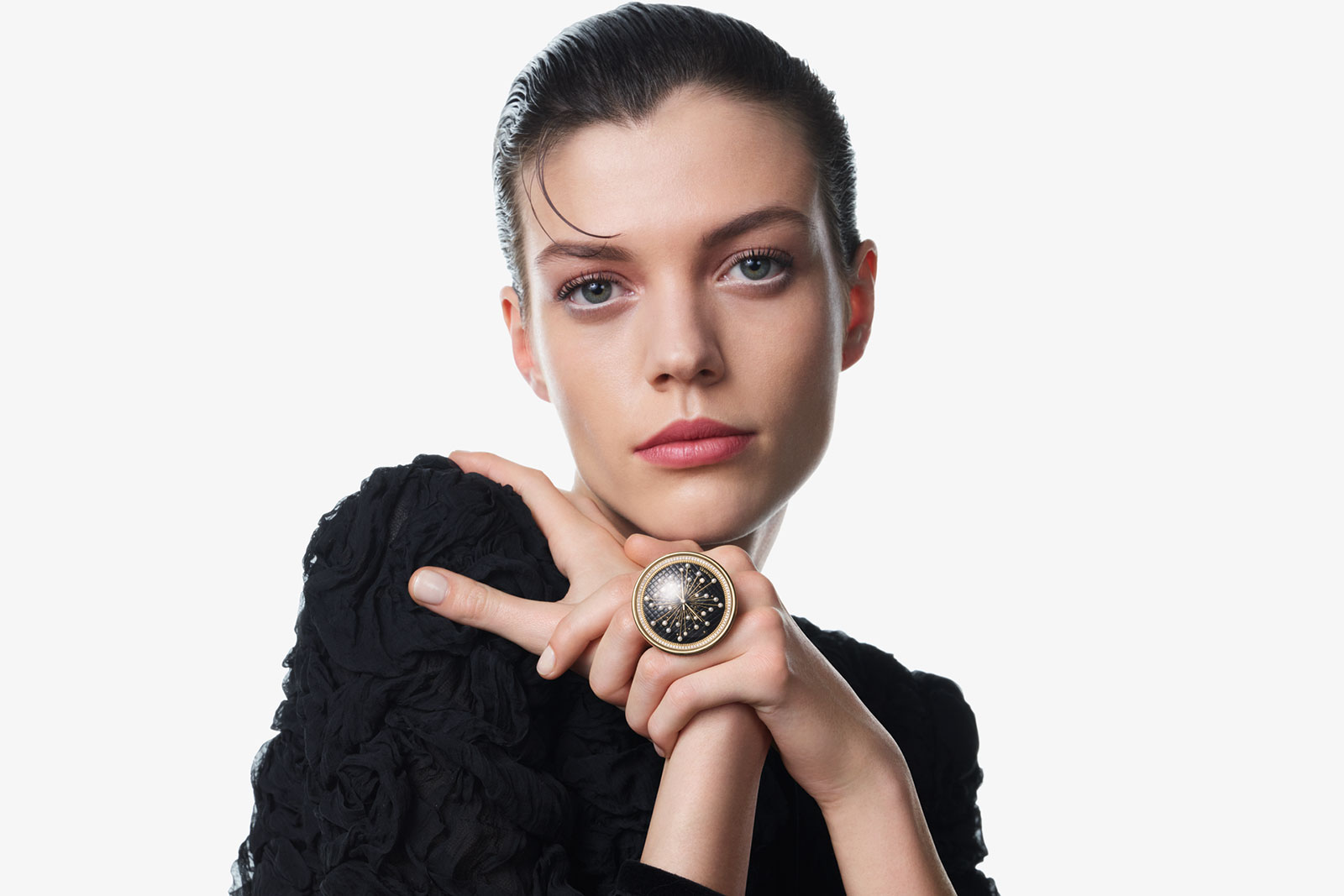
A tiny ring watch modelled on a pin cushion set with pearls and diamonds. Image – Chanel
SJX: I’ve seen the new collection and I’m impressed by the variety and design. The first question is, I see a comic-inspired theme with the character watches and the automaton, but these are serious mechanical watches with complications and high prices. How do you balance the whimsical design with the technical, horological nature of the watch?
Arnaud Chastaingt (AC): You know, I don’t know how to explain that. It’s my personal vision and of course, my vision for Chanel. I find the balance when a watch makes me happy, when it is something that makes you smile.
Chanel is a serious brand for a lot of things but our DNA always had a kind of self reflection, when you observe yourself from a distance. It’s important to have the time on a watch, but sometimes the satisfaction goes beyond the time.
SJX: You mentioned Chanel is a serious brand. For me, Chanel is a brand that is black and white; you are in fact dressed in black and white.
AC: But I wasn’t black and white before starting working in Chanel. [Laughs] When you see white on black – it’s recognisable but Chanel’s style is really more complex than that. Gold is very important for Chanel; it’s a mix between black and gold, and sometime colours too.
If you go to our fashion show, it’s certainly not black and white – far from that. The authority of black and white is really in our DNA, but if you look at the patrimony of Chanel, it’s very more complex than that. Colour is always present in our collection. For a designer, Chanel is a beautiful territory because of [patrimony].
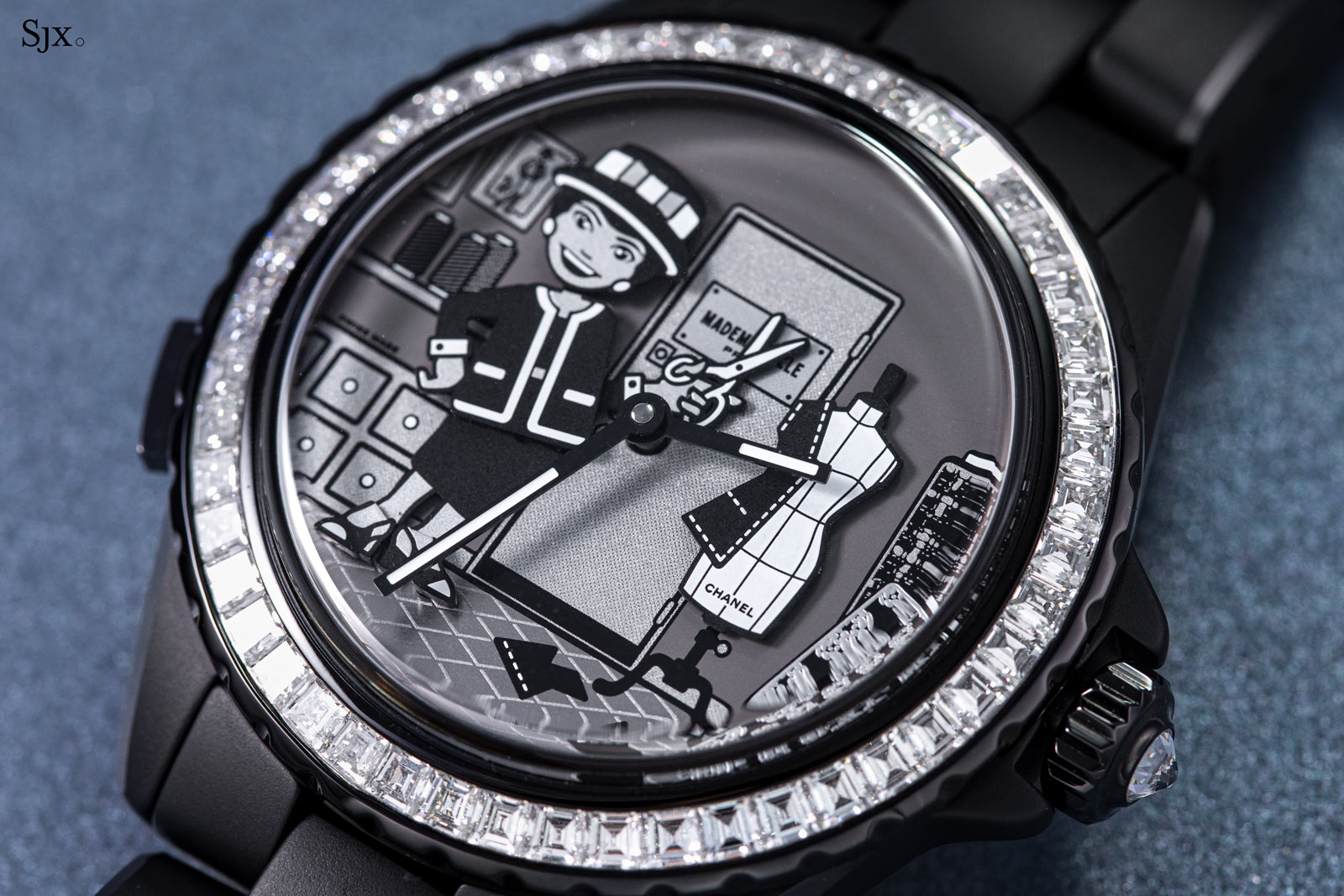
This year’s J12 Couture Workshop Automaton Calibre 6 with an in-house movement featuring an automaton figure of Coco Chanel
SJX: On the subject of the character of the brand, I feel Chanel is a brand that mainly caters to female clients with cosmetics, clothing, and so on. But the brand makes a good number of high-end men’s watches like the jumping hour and so on. How do you find inspiration for these men’s watches when the brand is predominantly focused on a female audience?
AC: I never create a watch as a masculine watch; I do not design a watch for a “market”. When I designed the Monsieur [with jumping hours and retrograde minutes], for example, ten years ago, it was one of the first watches I designed when I started working for Chanel.
At this time, I just started at Chanel and the last president [of the watch division] told me, “We have a big secret… we are currently developing our own movement in our manufacture.” So the Calibre 1 was in development and it was the biggest secret in Switzerland.
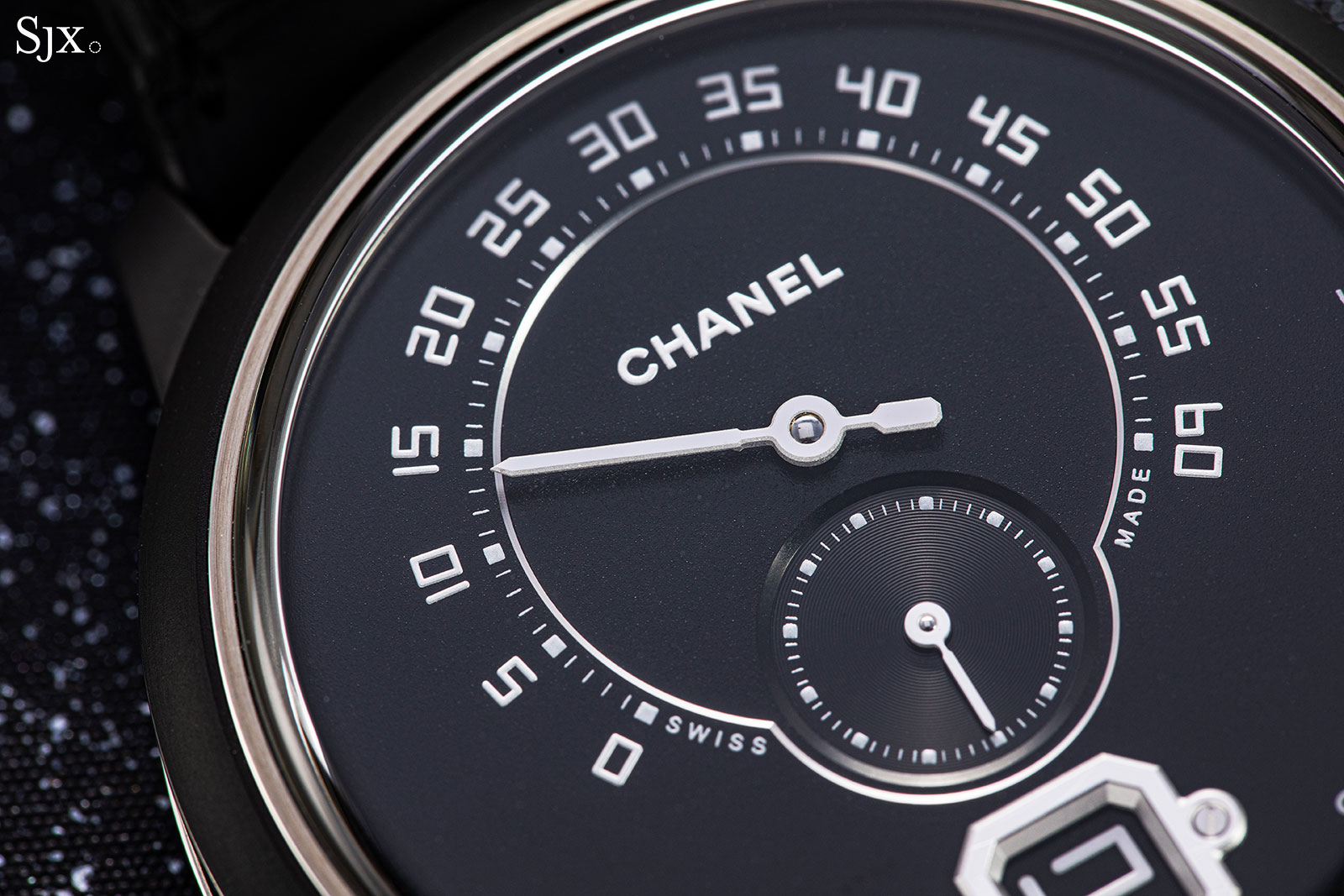
The Monsieur features a retrograde minutes and jumping hours
SJX: Was it being developed as a man’s watch?
AC: No, first we developed the movement. Then of course, I had to make a choice and I quickly decided I wanted a masculine watch.
SJX: I see. But it could have been a ladies’ watch.
AC: Yes, but I had this obsession with a masculine watch for a simple reason: you may know Chanel today as a feminine brand, but Gabrielle Chanel built her style with men. A lot of design codes of Gabrielle Chanel came from men. For example, tweed is a man’s material. So is the shape of her jacket and so on. [The Calibre 1] was the first in-house calibre of Chanel, and everybody knows that men love watches.
SJX: Tell us about the design of the Monsieur.
I remember it was one of the more complex designs I did. At the time, I had just left the house that I was working at before, so a lot of people were saying Arnaud Chastaingt would do [something similar]. It was absolutely not the route I wanted to take.
So for the Monsieur, my obsession was that calibre should come first. You see a dial that is simple and extreme, but I tried to infuse Chanel’s codes so you the lion on the front and the back.
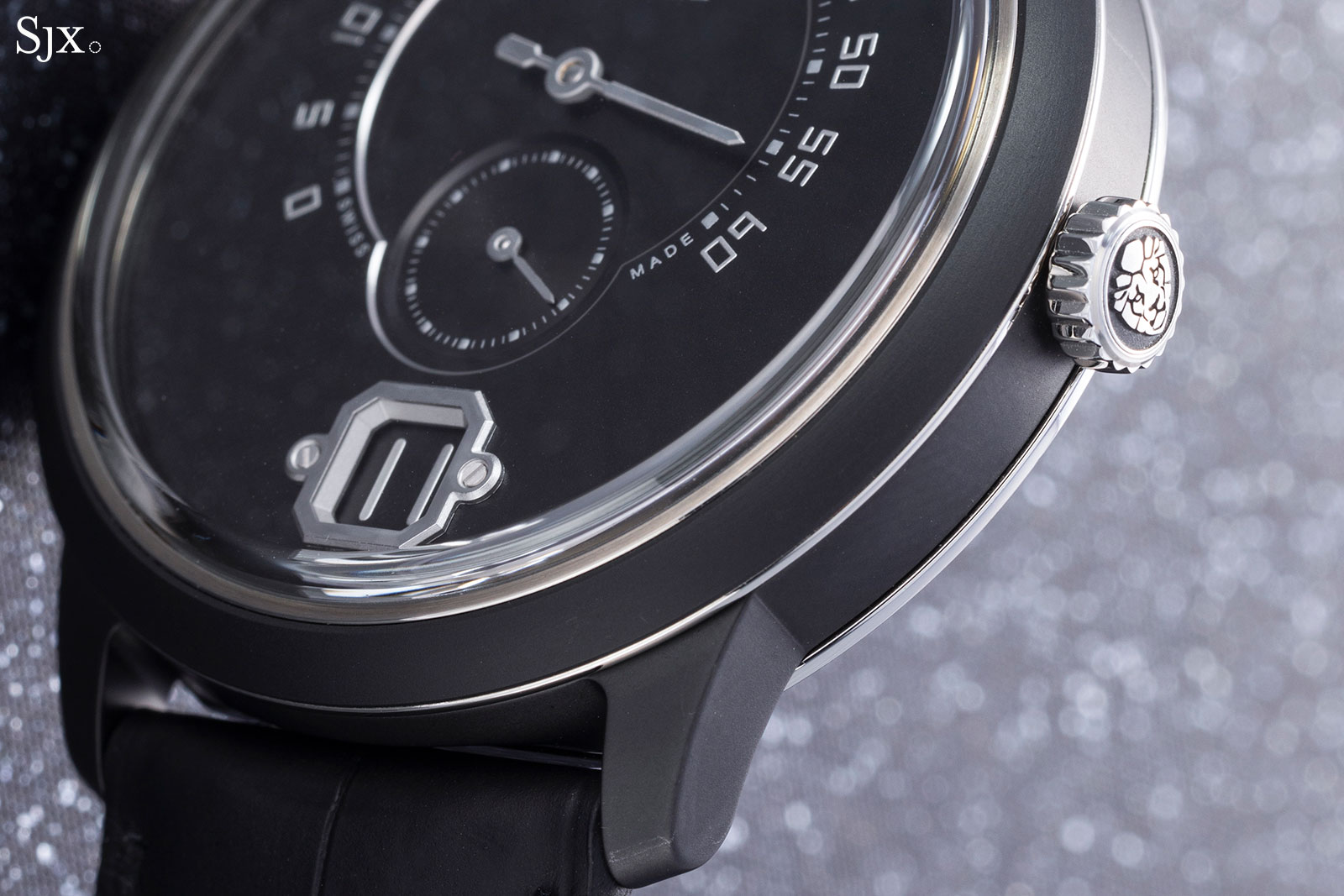
The Monsieur Edition Noire with a ceramic case
SJX: Did you also design the movement with the circular bridges?
AC: Yes. That was a surprise because, in my last life, the design of the movement was the territory of the watchmaker. The [movement] design was in Switzerland and designers of the movement wanted to do something around Chanel. I remember the first time they contacted me while I was in Paris. They said, “We’d like to come to see you in Paris and know your vision.”
I quickly explained my vision of watchmaking. You already know complications horloger – complications watchmaker; the word “complication”. But all her life Gabrielle Chanel only wanted [the opposite of] simplicity.
So at this point, it was important for me to find a graphic style for a complicated calibre. And I remember taking my pen for the first time, thinking you can go from point A to point B [in a complicated way], but we work for Chanel so I don’t want that. I want something straight or perfectly round. And no [ornamental patterns] so we have no arabesques. That’s why when you see the Calibre 1, you recognise…
SJX: It is a very distinctive architecture. And you were responsible for the architecture of all the movements.
AC: And that’s why today with the automaton, I spent less time on the architecture of the calibre. [The constructors in Switzerland] know I want perfect round forms.
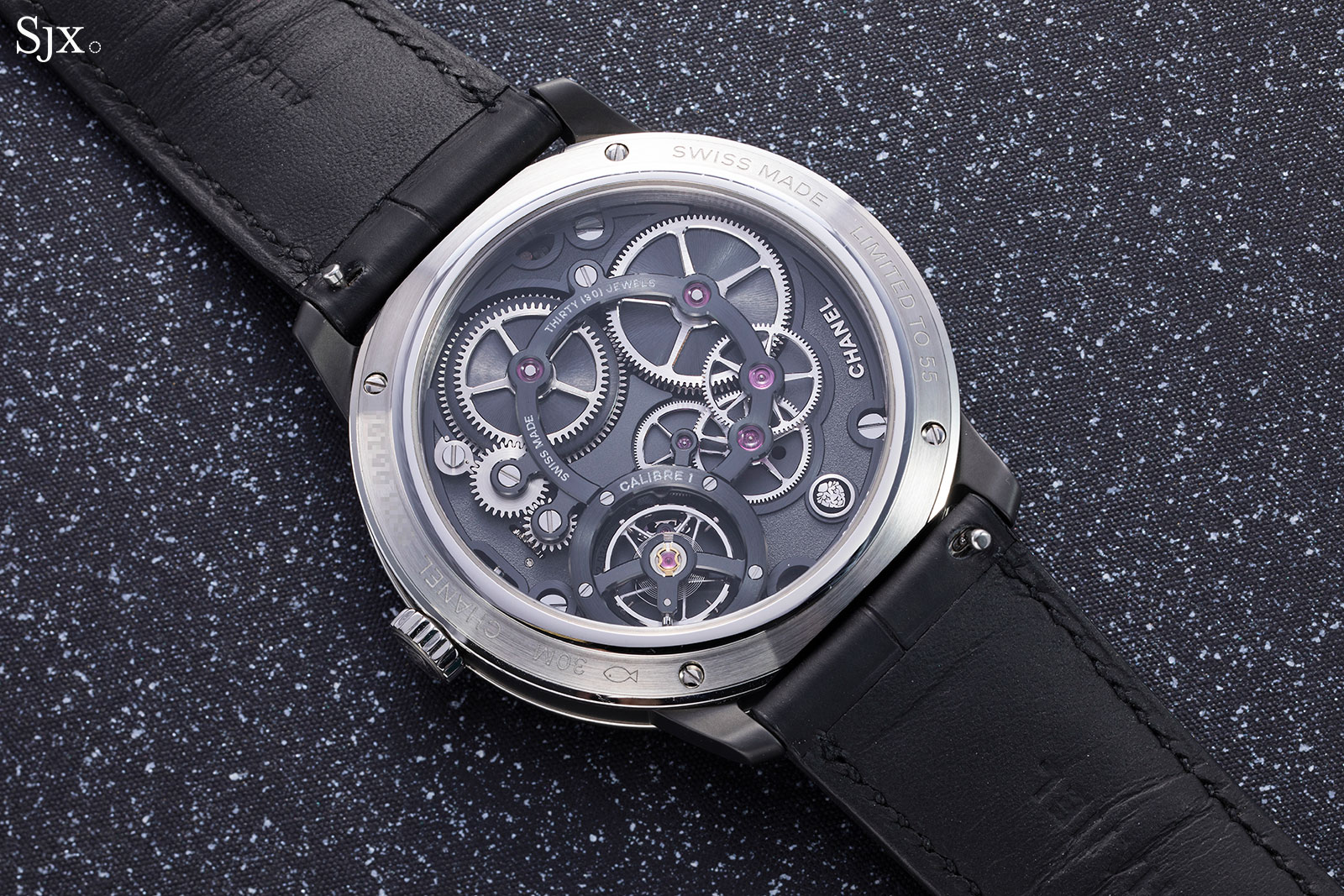
The in-house Calibre 1 found in the Monsieur
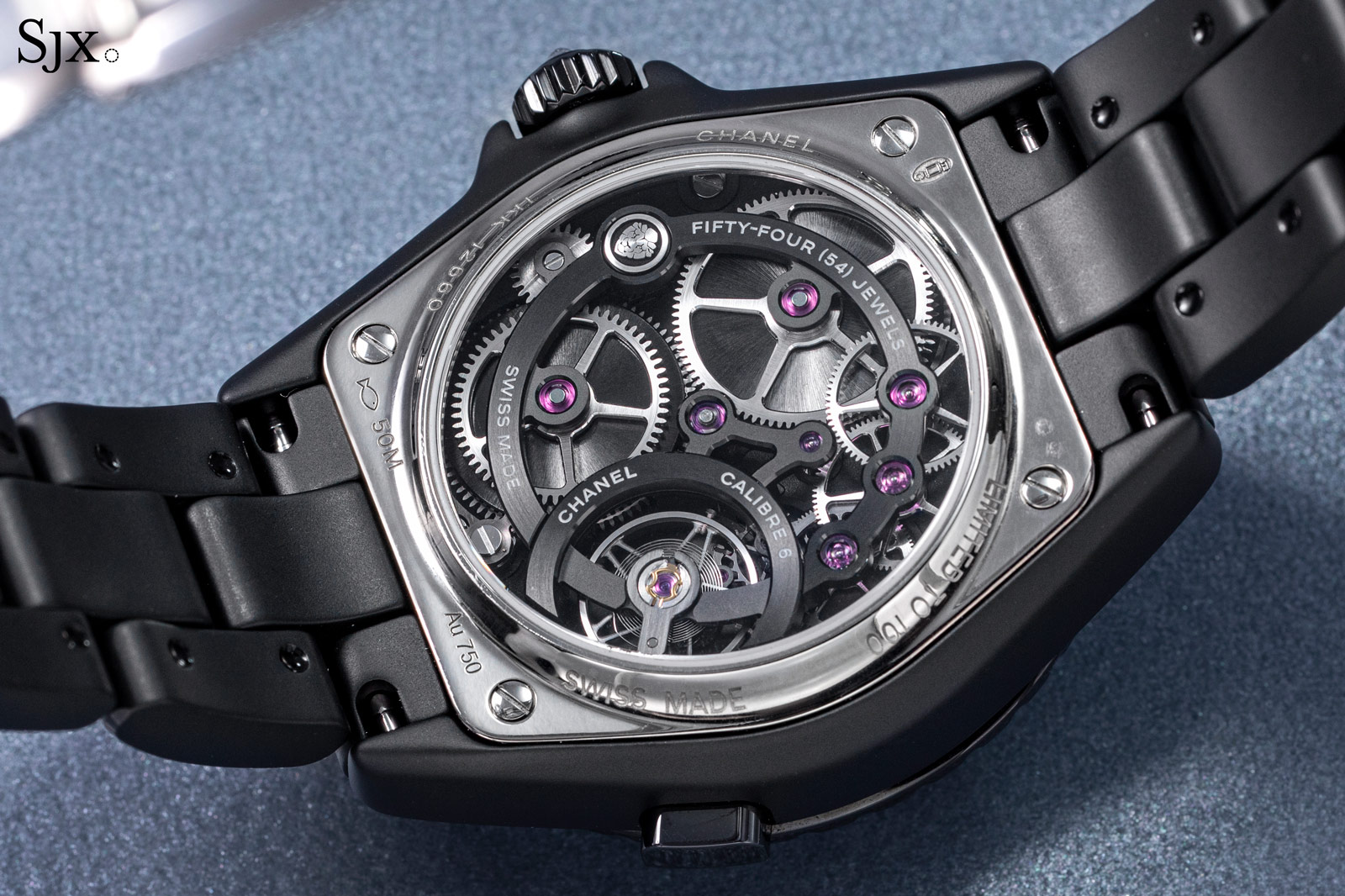
And the Calibre 6 in this year’s J12 Couture Workshop Automaton
SJX: I especially liked the Monsieur with the marble dial.
AC: If you want to know the real story [of the dial]. We had the dials in my studio and I removed 80% of the dials.
My team created a transparent [template with the dial markings and Chanel logo], and I put on it on each dial to see if the aesthetic of the marble was good or not, whether the composition was good for me. I put the transparent [template] on the dial and told [my team] I want this one in this orientation. I chose them one by one and [my team] went crazy.
They asked “Are you going to do that on all?” Yes! I didn’t want an ugly one in our collection.
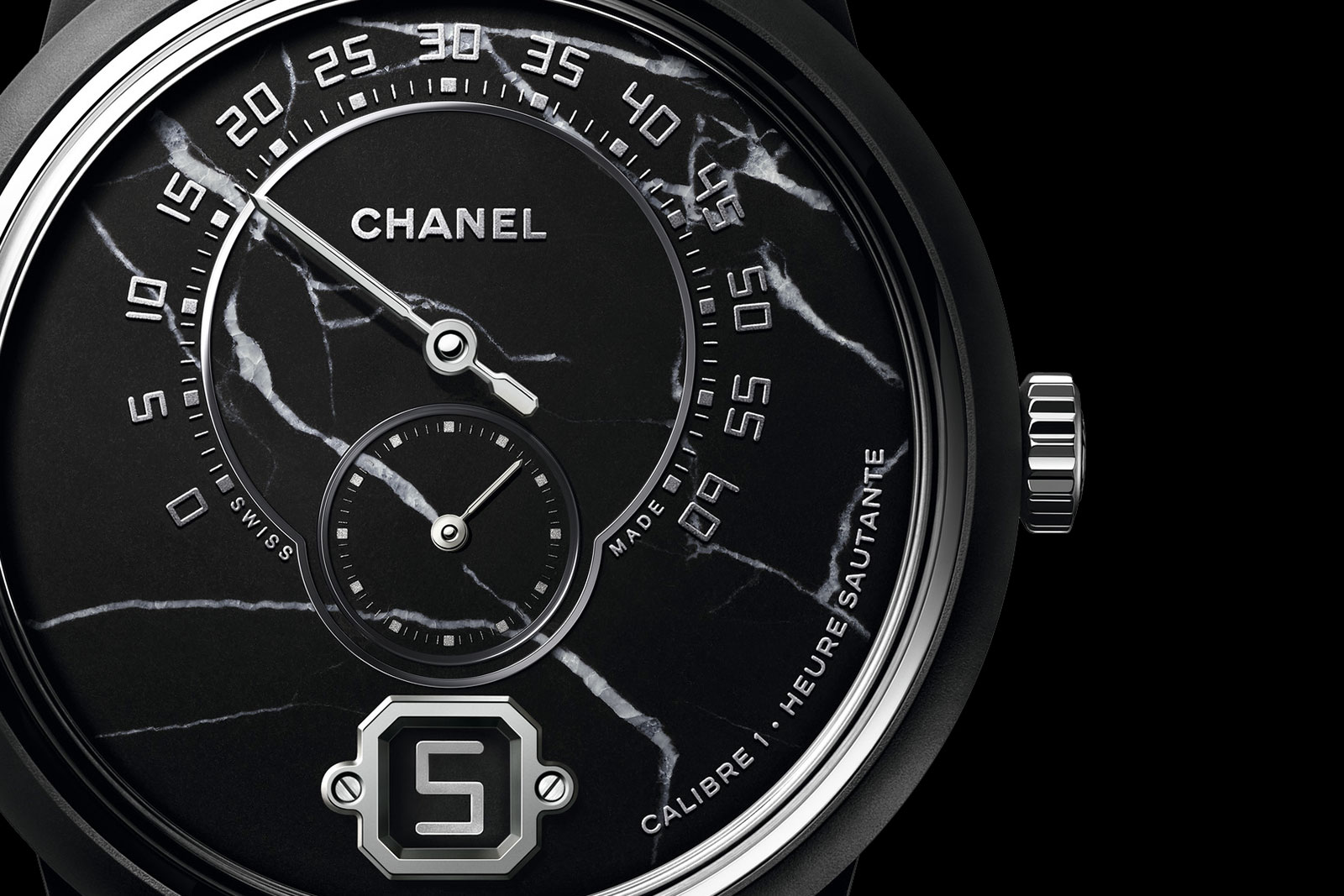
The marble dial of the Monsieur. Image – Chanel
SJX: You even designed the buckle [of the Monsieur]. It’s actually an important detail because most brands use the same buckle for every watch. I think the attention to detail is impressive, and something a lot of watchmakers miss.
AC: We have to because details are important. I’m obsessed with details. Maybe if I needed to design a jacket or bag, it would be so quick. When you design a watch, it’s a very long process. When you launch a watch it’s a long term [product]. You will not change the watch in three months like in fashion.
But my job is only aesthetics after all. I know that the watchmakers spend so much time on quality. It makes me happy [engineering and manufacturing] is not my job, but it makes me even happier to know I can do something crazy, like an automaton with this scene. But I know that Coco Chanel was just perfect in finishing, perfect in cut, so [the quality in Switzerland] makes me feel more confident.
SJX: Last question. Your work is not only just designing watches but also objects? This year you have a clock, pendants, necklaces…
AC: You know, my job is not only me designing a watch, I’m creating an object with time. I don’t believe that a watch is only something you wear on the wrist. We should not forget that before the wristwatch, time was in the pocket [for men] and a woman was wearing it on her jacket. That’s why I want to wear time on the wrist, but also a ring, or a necklace, on a cuff.
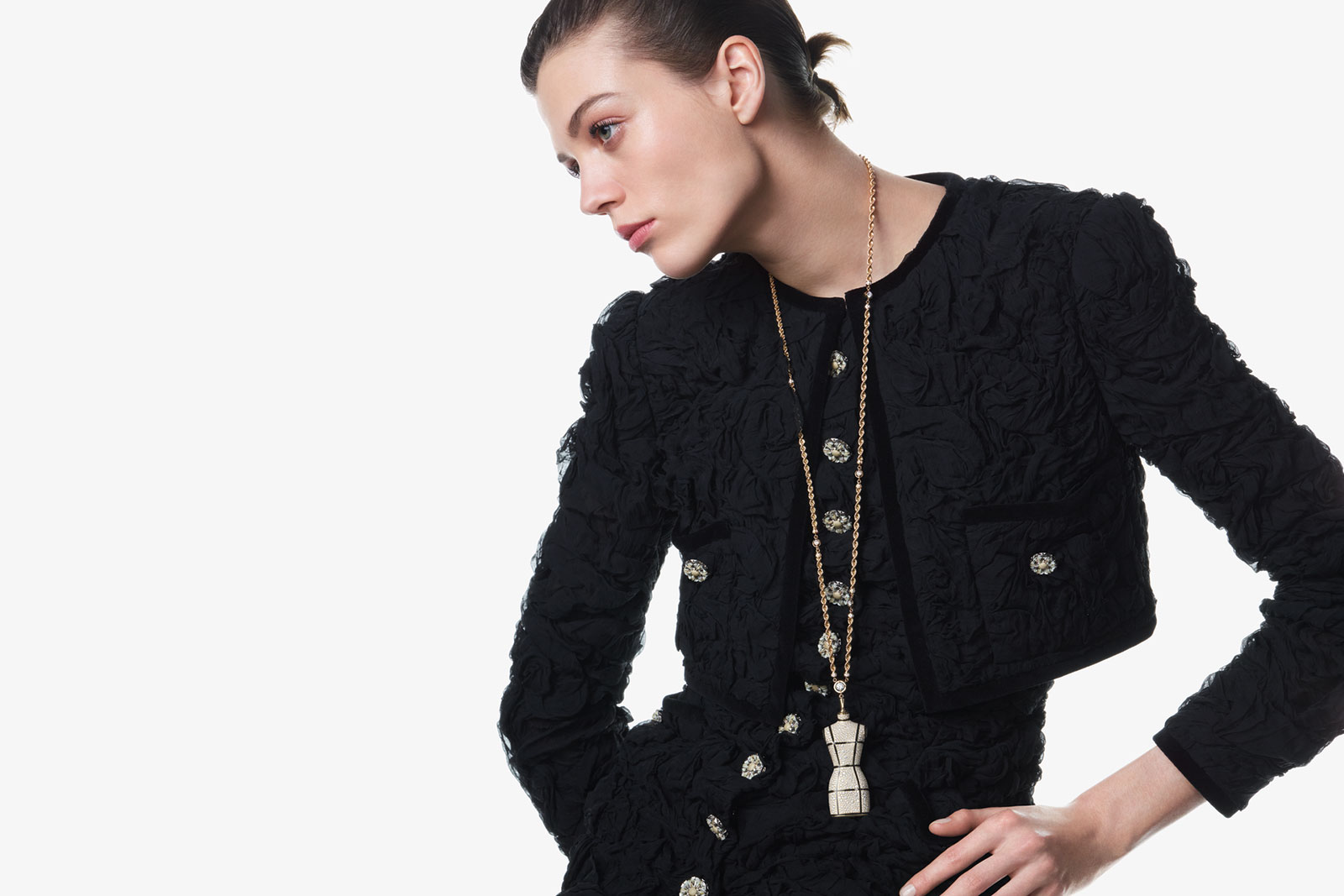
The Couture O’Clock Bust Long Necklace and pendant watch. Image – Chanel
SJX: I noticed this year’s [automaton] clock now is more feminine, while in the past, you had like the lion clock that was more masculine. A completely different style.
AC: [The lion clock was] masculine. But we sold five pieces I think, [and some] to women. Chanel fascinates a lot of people, and it doesn’t matter if it’s a man or a woman. It’s a same thing for fashion, you sometimes see a man wearing a Chanel bag or jacket.
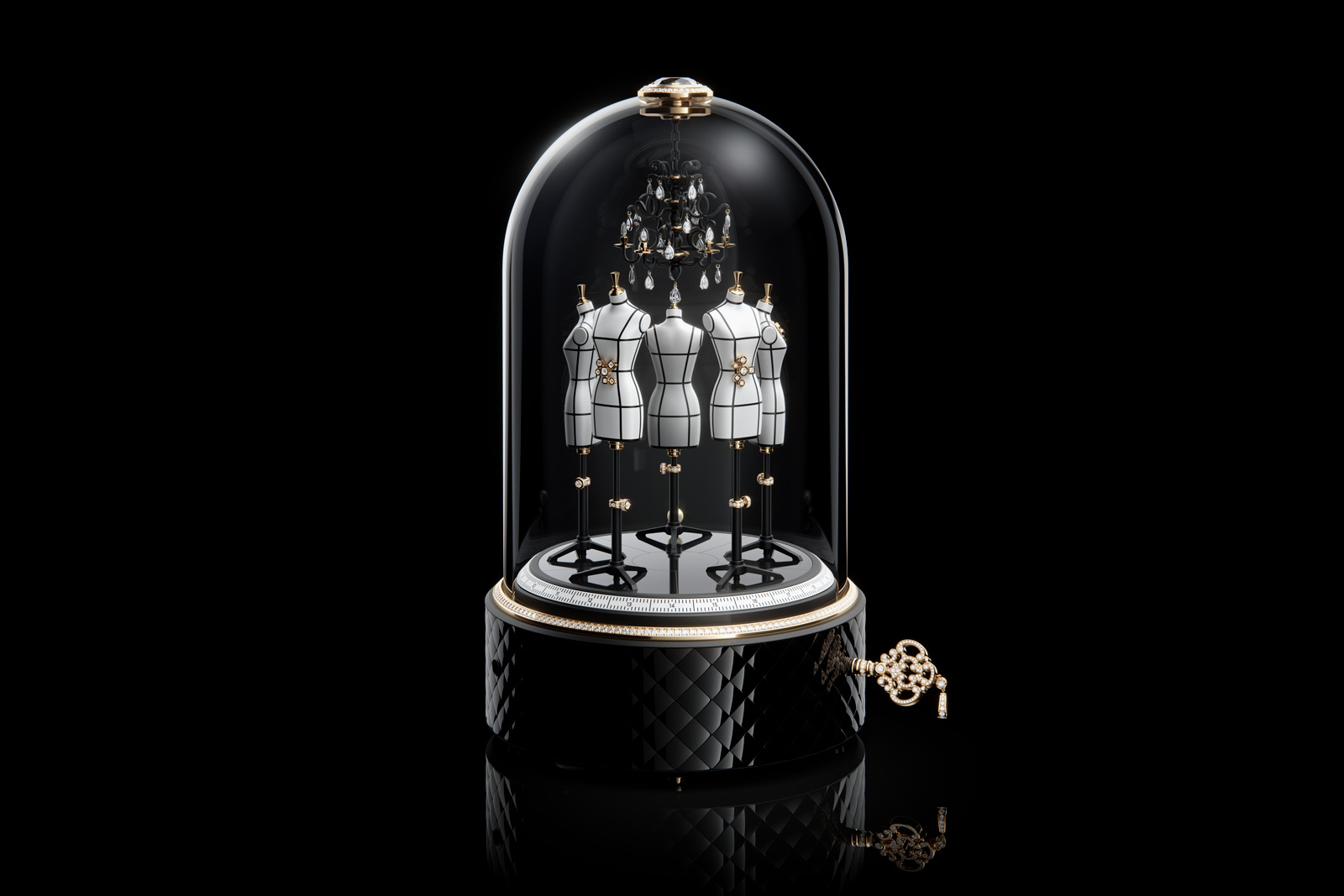
The Couture O’Clock Musical Clock. Image – Chanel
SJX: On that topics, I realised the J12 had a lot more men’s offerings in the past. There were bigger J12s like the chronograph, GMT, and so on. Now it feels like the current J12 collection is almost entirely for women because the biggest size is like 38 mm [whereas it was 42 mm before]. What’s behind this evolution?
AC: Because it is my vision. It’s my vision of Chanel; we spoke that Chanel is maybe a more feminine brand…
SJX: Or you will be launching a larger J12 for men soon?
AC: We will see. [Laughs] It’s never really up to market trends. Never. With Chanel, it never works like that. If we feel in the conversation that it could be a serious thing for the brand [then it will happen].
Back to top.